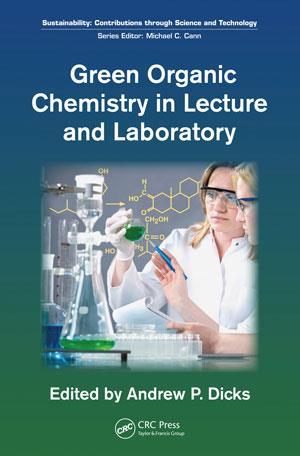Andrew Dicks (ed)
CRC Press
2011 | 299pp | £95 (HB)
ISBN 9781439840764

Green chemistry has become a crucial and central part of chemistry over the last 20 years or so, with major organisations declaring their resolve to drastically cut their waste outputs. This puts a great onus on universities to equip their graduates not only with an excellent level of knowledge of chemistry and related subjects, but with a thorough grounding in what makes a process or a product greener than its predecessor.
This book aims to provide information and examples that can be used in this process. It covers a wide range of key themes, ranging from the 12 principles of green chemistry via various different approaches to conventional synthetic procedures, waste management and waste valorisation.
What is vital to emphasise to students and to researchers is that any given technique is not necessarily green; rather it is how it is used that will decide this. I’m sure most of the green chemistry community have refereed papers which claimed to be green because of the use of microwaves, or supercritical fuids, or a heterogeneous catalyst, but which weren’t in the least green because these techniques had been used inappropriately. All can be, and often are green, but they must be evaluated and used correctly and intelligently before the benefit is seen. This book makes this point several times, which is refreshing. This indicates care and depth, and should be repeated to ensure students are able to critically evaluate the reality of a case, rather than simply tick a box.
The book is detailed and very readable – it is certainly a valuable addition to the area.
Purchase this book at Amazon.co.uk.












No comments yet